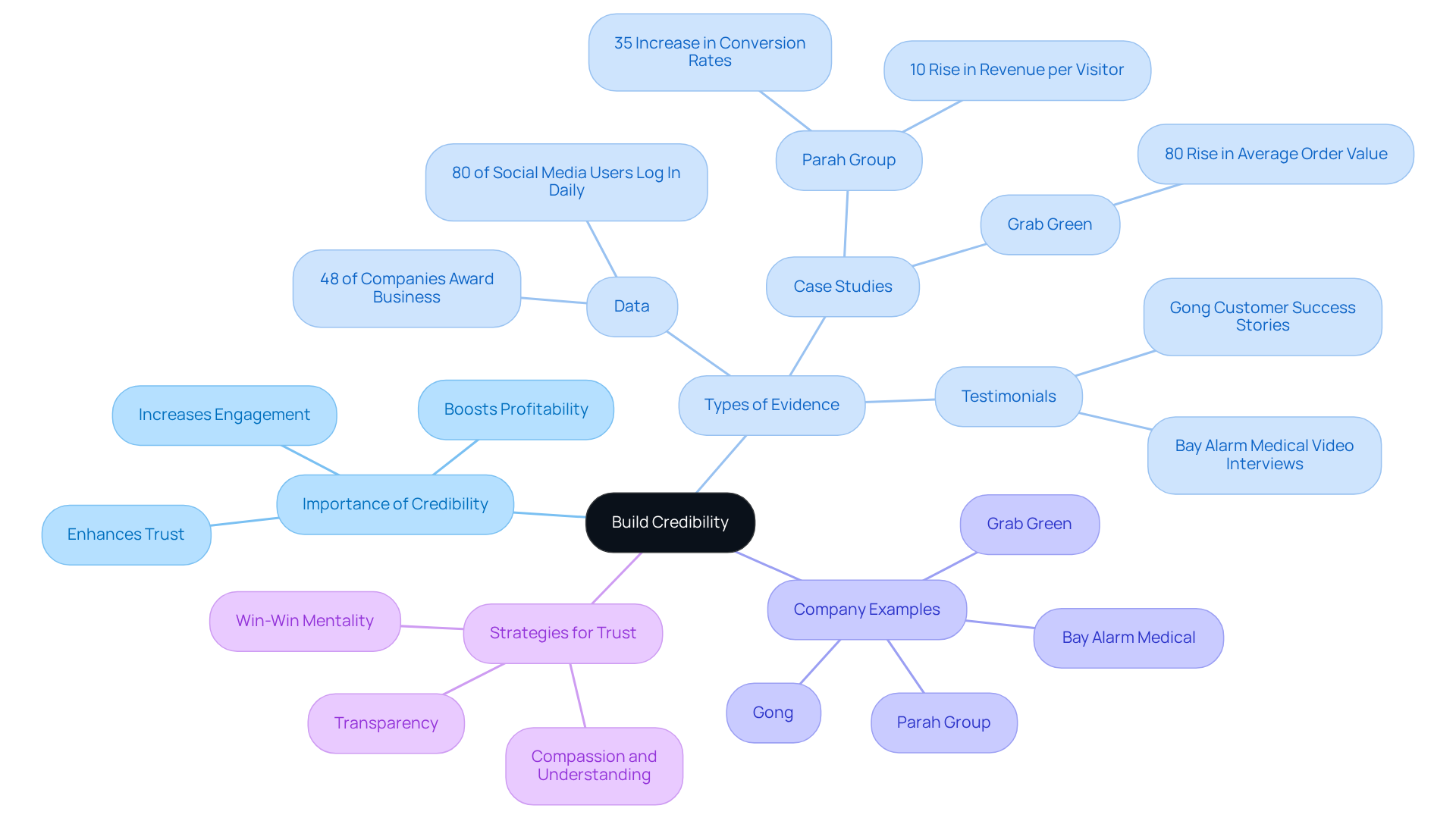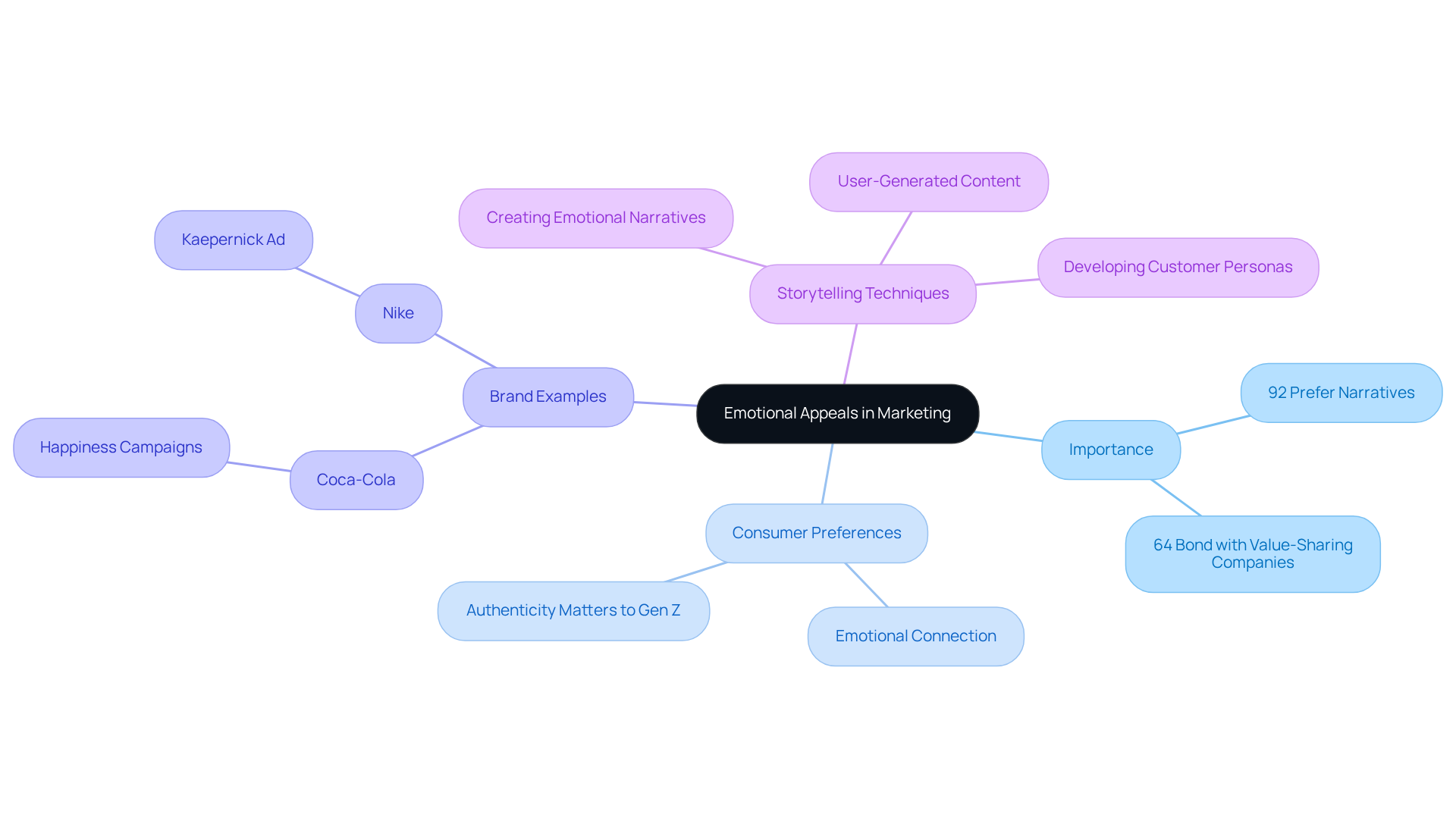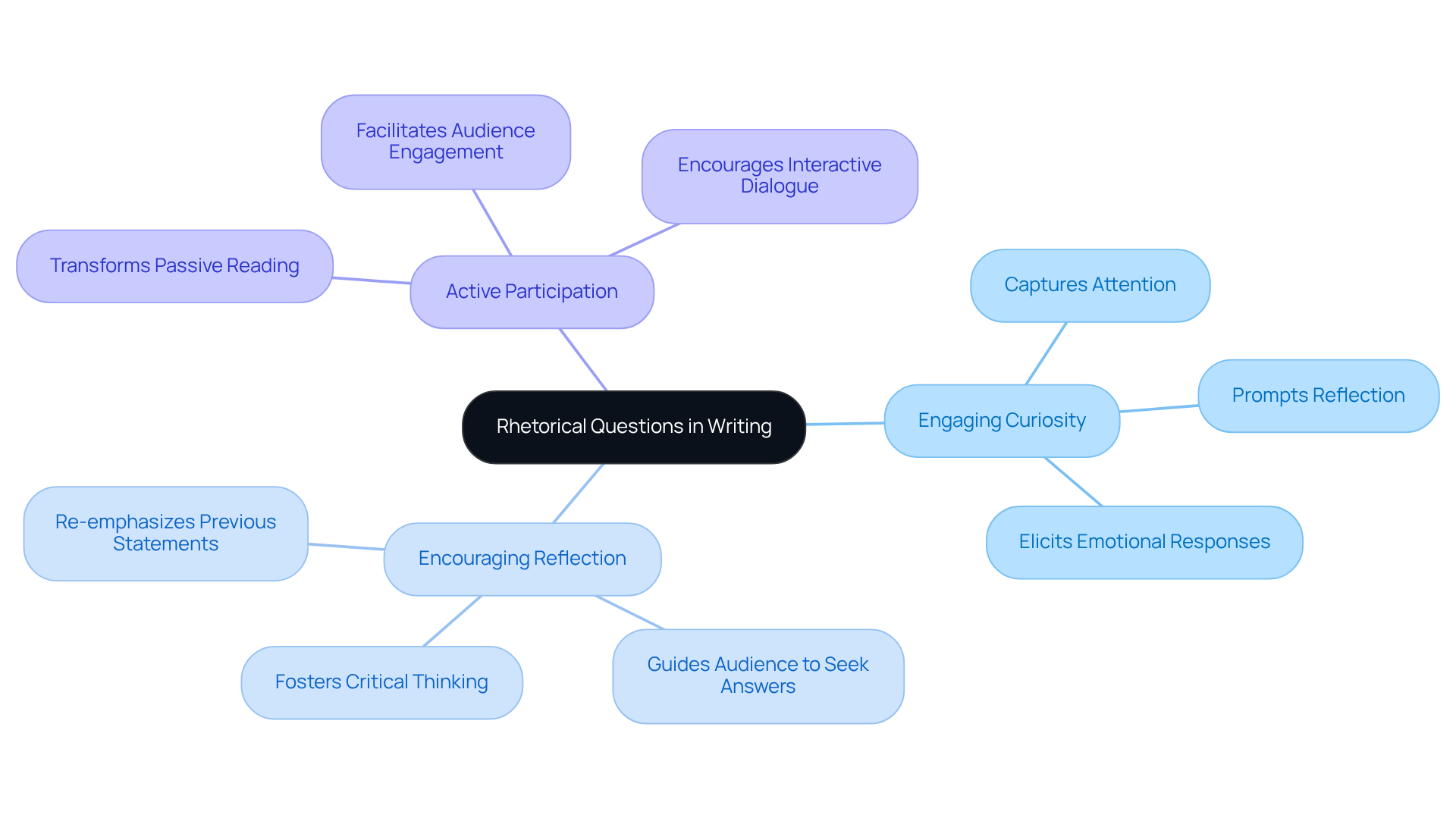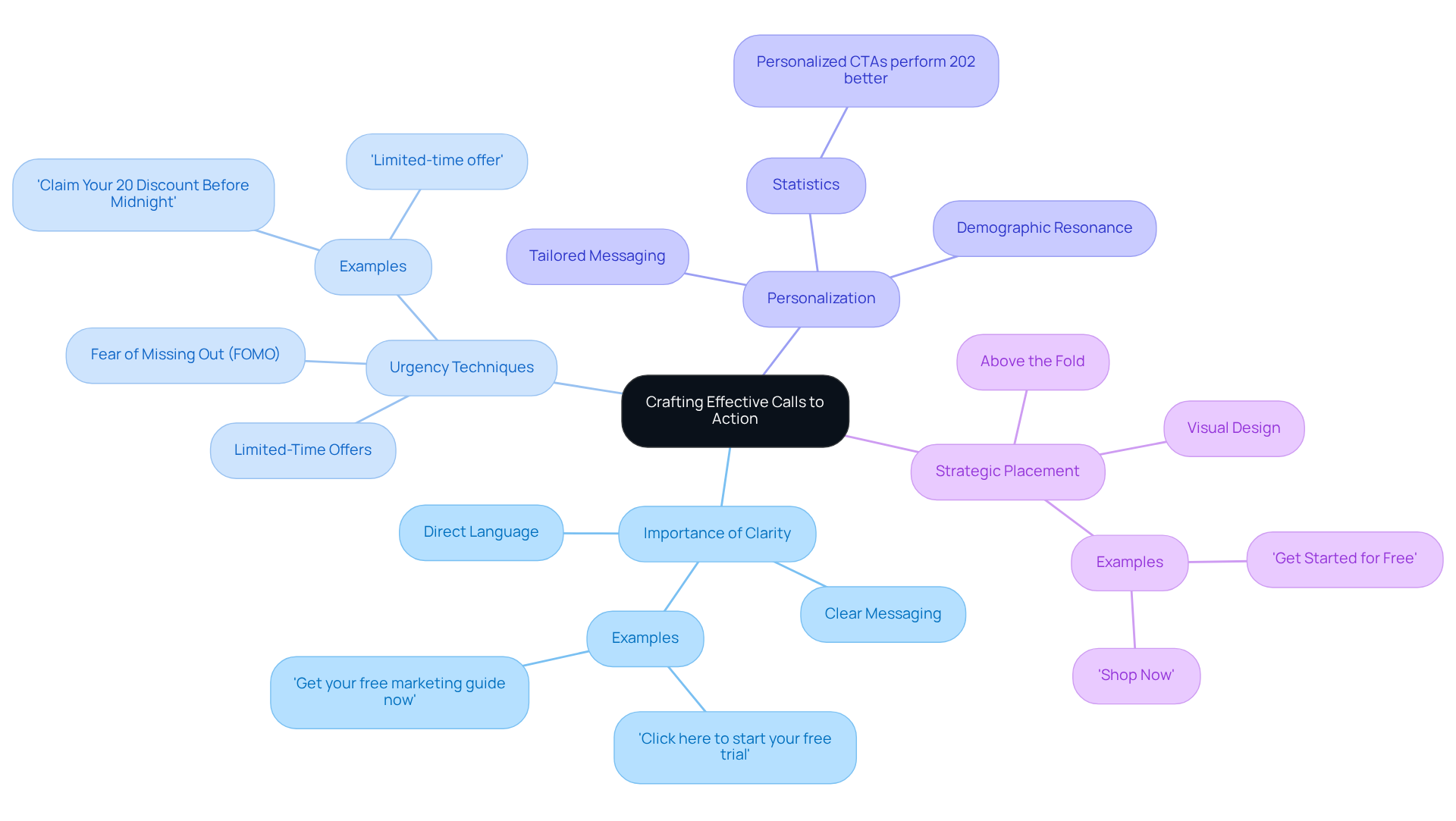
Overview
The article delineates ten persuasive writing techniques that can significantly elevate a brand's impact and conversion rates. It substantiates this assertion through compelling case studies and data-driven insights, illustrating how:
- Tailored messaging
- Emotional appeals
- Clear calls to action
can effectively engage audiences and drive sales for direct-to-consumer companies.
Introduction
Crafting a compelling narrative is essential for brands seeking to enhance their impact in an increasingly competitive market. By employing persuasive writing techniques, businesses not only capture attention but also foster deeper connections with their audiences, ultimately driving higher conversion rates and increased loyalty. As companies navigate the complexities of consumer psychology and market demands, the challenge lies in effectively tailoring their messages to resonate with diverse audiences. What innovative strategies can brands implement to ensure their writing not only informs but also inspires action?
Parah Group: Comprehensive Conversion Rate Optimization for Persuasive Writing
Parah Group stands at the forefront of Conversion Rate Optimization (CRO), strategically enhancing the profitability of direct-to-consumer (DTC) companies through writing persuasive techniques. By leveraging data-driven strategies and insights into consumer psychology, Parah Group enables companies to craft compelling narratives that resonate profoundly with their audiences. This focus on writing persuasive techniques is not merely an enhancement; it is a pivotal element in achieving and increased average order values.
For instance, a $30M clothing label saw a 35% increase in conversion rates after implementing Parah Group's strategies, which included:
- Optimizing their homepage to highlight social proof
- Reducing unnecessary pop-ups
- Gamifying the progress indicator for free shipping thresholds
In a similar vein, Grab Green, a $15M cleaning product company, experienced an impressive 73% rise in average order value by:
- Testing free shipping thresholds
- Introducing bundles to encourage larger purchases
- Conducting price testing to identify optimal price points
These case studies illustrate the vital role of writing persuasive techniques in driving sustainable growth. As Ken Zhou, Chief Operating Officer, asserts, 'CRO ensures that the traffic you already pay for converts at a higher rate, giving you more return on every dollar spent.'
Moreover, as the CRO landscape evolves, brands that prioritize effective communication are better equipped to navigate increasing competition and customer acquisition costs, ultimately converting their traffic into tangible results.

Understand Your Audience's Needs: Tailor Your Message for Impact
Understanding the needs, preferences, and pain points of your readers is essential for writing persuasive techniques. Conducting comprehensive research on your audience enables you to customize your message effectively. Utilize to gather insights into what resonates with your target group.
For instance, companies like HelloFresh have successfully targeted young consumers by aligning their marketing messages with the convenience they seek, showcasing the power of audience insights. By addressing specific concerns and desires, you can utilize writing persuasive techniques to craft a more impactful message that not only encourages engagement but also drives action.
This strategy is crucial in a competitive landscape where 68 percent of consumers expect personalized experiences, making it imperative to adapt your messaging based on real-time feedback and data-driven insights.

Build Credibility: Establish Trust with Your Audience
Establishing credibility is essential for writing persuasive techniques, as it demonstrates expertise and reliability. Incorporating data, testimonials, and case studies significantly bolsters your claims. Research indicates that 48% of companies awarded business to an organization after engaging with their thought leadership content, underscoring the power of well-supported messaging. Parah Group's case studies exemplify this, showcasing how a $30M apparel company achieved a 35% increase in conversion rates and a 10% rise in revenue per visitor through strategic homepage redesigns and optimized pricing. Similarly, Grab Green, a $15M cleaning product company, experienced an 80% rise in average order value by introducing free shipping thresholds and bundle offers. These results emphasize the effectiveness of data-driven strategies in boosting profitability for DTC companies.
As Kate Vitasek observes, cultivating a Win-Win mentality promotes trust and collaboration, essential for enduring connections with your stakeholders. Additionally, testimonials serve as social proof, enhancing trust; brands like Bay Alarm Medical effectively use video interviews to share authentic customer experiences, while Gong highlights customer success stories that illustrate the brand's role in their clients' achievements, further building credibility.
To enhance your credibility, ensure your content showcases that are meticulously researched and free from errors, reflecting professionalism. Transparency regarding your intentions and offering clear, honest information can also enhance your bond with the listeners. Marketing experts highlight that compassion and understanding the needs of your target group are essential for establishing long-term trust. By aligning your messaging with genuine insights and showing a commitment to the success of those you serve, you can create a persuasive narrative that resonates and drives engagement.

Leverage Emotional Appeals: Connect with Your Audience's Feelings
Emotional appeals serve as potent instruments in writing persuasive techniques, allowing companies to forge deeper connections with their audience. Marketers can construct narratives that resonate on a personal level by engaging feelings such as joy, fear, or empathy through writing persuasive techniques. For example, a compelling customer success story not only illustrates the company's value but also evokes emotions that inspire potential buyers to engage.
Research indicates that 92 percent of consumers prefer , emphasizing the role of writing persuasive techniques in capturing attention and fostering customer loyalty. Brands like Coca-Cola exemplify the successful use of emotional narratives, particularly through campaigns that promote happiness and connection, reinforcing the notion that emotional advertising can greatly enhance consumer engagement.
Furthermore, studies reveal that 64 percent of consumers feel a bond with companies that share their values, emphasizing the importance of writing persuasive techniques to align narratives with audience sentiments. The tagline from Nike's Kaepernick ad, 'Believe in something. Even if it means sacrificing everything,' illustrates how companies can elicit powerful emotions and values through their storytelling.
By employing storytelling techniques that invoke genuine emotions and uphold authenticity—an insight highlighted by Dan Gartlan, who asserts that 'audiences are smart and they can see through companies that are inauthentic'—DTC brands can leverage writing persuasive techniques to create unforgettable experiences that drive action and loyalty.

Incorporate Rhetorical Questions: Engage Your Audience's Curiosity
Rhetorical questions serve as in writing persuasive techniques, engaging listeners and fostering critical thinking about your message. Consider a question such as, 'Have you ever wondered why your conversion rates are stagnant?' This not only captures attention but also encourages readers to reflect on their own experiences. By prompting such introspection, you guide them to seek answers within your content, thereby cultivating a deeper connection and enhancing their engagement.
Marketing specialists emphasize that these inquiries can transform passive reading into active participation, allowing individuals to feel directly involved in the discourse. By strategically integrating writing persuasive techniques like rhetorical questions, you can effectively steer the thoughts of your audience and promote a more interactive dialogue.

Utilize Repetition: Reinforce Key Messages for Retention
Repetition is a powerful writing persuasive technique that significantly enhances retention, especially in the context of Conversion Rate Optimization (CRO). By restating key messages throughout your writing, you ensure that your readers retain the most critical points. For instance, if your primary assertion is that your product elevates conversion levels, it is essential to emphasize this advantage multiple times across various contexts. This strategy not only reinforces the message but also aligns with that emphasize writing persuasive techniques to ensure consistent messaging across all platforms. Such an approach cultivates a rhythm that captivates readers and can markedly enhance your profitability by maximizing the impact of your existing resources.
Incorporating specific examples of how repetition can be effectively utilized in your marketing efforts is vital. Consider a campaign that underscores your commitment to sustainability. By consistently highlighting this value across diverse channels—social media, email newsletters, and your website—you reinforce your brand's identity and cultivate trust with your audience. Research indicates that repeated exposure to a message can elevate retention rates by up to 200% when spaced appropriately, underscoring the efficacy of this approach.
Moreover, communication experts assert that familiarity breeds trust; thus, consistent messaging establishes credibility with your audience. Studies reveal that consumers are more inclined to perceive repeated statements as truthful, which can profoundly influence their purchasing decisions. By disseminating your core message across multiple platforms, you ensure that your audience encounters it frequently, reinforcing its significance and enhancing retention. This holistic strategy not only aligns your paid ads and landing pages but also maximizes the ROI of your CRO initiatives, ultimately driving substantial growth for your direct-to-consumer business.

Use Statistics and Facts: Strengthen Your Argument with Data
Incorporating statistics and factual data is essential for enhancing the persuasiveness of writing persuasive techniques. Parah Group's case studies illustrate that brands optimizing their conversion rates have achieved a remarkable 35% increase in conversion rates and a 10% boost in revenue per visitor. Presenting these figures not only bolsters your argument but also demonstrates effective writing persuasive techniques that resonate with your audience.
To maximize impact, it is imperative that your data is both relevant and derived from reputable studies, as this significantly enhances your authority. Current research indicates that consumers are more likely to trust messages that include numeric information, particularly when presented as frequencies rather than percentages. This approach clarifies the information and aids in decision-making.
Furthermore, data-driven marketing strategies, such as utilizing compelling charts and relatable statistics, can enhance credibility and emotional engagement, making your arguments more effective. Experts note that the framing of data—whether as a loss or a gain—can influence consumer perceptions and actions, highlighting the critical role of writing persuasive techniques in effective communication.
It is crucial to cite credible sources to ensure the reliability of the data presented. Understanding (CRO) is also vital, as it aims to enhance your website to boost conversions, transforming more visitors into clients.

Tell Compelling Stories: Engage Your Audience Through Narrative
Storytelling is an indispensable part of writing persuasive techniques that captivates audiences and amplifies brand engagement. By weaving narratives into your content, you illustrate key points in a relatable manner. For instance, sharing an individual's journey with your product not only underscores its benefits but also cultivates an emotional connection that resonates with potential buyers. Research indicates that narratives are 22 times more memorable than mere facts, ensuring your message lingers in the minds of your audience.
Writing persuasive techniques involves that not only captures attention but also incites action, transforming passive readers into engaged customers. Brands that adeptly harness storytelling can forge deeper connections with their supporters. Furthermore, 64 percent of consumers report feeling a connection with companies that resonate with their values, underscoring the importance of aligning your narrative with your audience's beliefs.
Integrating user journey stories significantly enhances engagement. For example, Parah Group's case studies reveal how a $30M clothing company boosted its conversion rate by 35% through strategic storytelling on their homepage, emphasizing social proof and client feedback. Similarly, a $15M cleaning product label increased its average order value by 80% by showcasing bundles and value propositions that resonated with consumers. These examples exemplify how personal stories can elicit emotional responses and foster community.
As branding specialists assert, writing persuasive techniques through a well-crafted narrative not only conveys a company's message but also nurtures trust and loyalty, making it a vital component of contemporary marketing strategies. By focusing on authentic stories, companies can inspire action and build lasting connections with their customers.

Incorporate Humor: Make Your Writing Relatable and Engaging
Incorporating humor into your writing is not just an option; it is a powerful strategy that enhances relatability and engagement. A well-placed joke or a clever remark has the potential to capture attention and foster a positive connection with your audience. However, it is crucial to deploy humor judiciously, ensuring that it aligns seamlessly with your brand voice. When executed with precision, but also makes it more memorable for your audience.

Craft a Clear Call to Action: Direct Your Audience's Next Steps
In writing persuasive techniques, a strong call to action (CTA) is essential, serving as a direct guide for your readers on the next steps to take. Clear, compelling phrases such as 'Sign up now for exclusive offers' or 'Get your free trial today' not only create a sense of urgency but also motivate immediate action. Research indicates that personalized CTAs can perform up to 202% better than generic ones, underscoring the importance of tailoring your messaging to resonate with your audience's needs and emotions. As Andi Coombs states, "Personalized CTAs perform 202% better than generic CTAs."
To , ensure your CTA stands out visually, utilizing contrasting colors and strategic placement within your content. For example, a strategically positioned button can boost click-through percentages by roughly 30%. Furthermore, aligning your CTAs with the audience journey stages enhances engagement; for instance, using 'Learn more' for awareness and 'Buy now' for conversion can significantly improve response rates.
Marketing experts emphasize that clarity in CTAs is paramount. As Roshni Wijayasinha notes, aligning your call to action with the customer's mindset increases the likelihood of engagement. Furthermore, Susan Hardy highlights that "Calls to action with urgency—such as 'Limited-time offer'—prompt immediate action by leveraging the fear of missing out (FOMO)." Successful DTC companies have demonstrated the power of effective CTAs, with businesses like Forever 21 driving email sign-ups through enticing offers such as 'Get 20% off.' By focusing on clear, actionable language and employing writing persuasive techniques to create a sense of urgency, you can significantly boost your brand's impact and conversion rates.

Conclusion
Mastering persuasive writing techniques is essential for brands aiming to enhance their impact and drive conversions. By implementing strategies that resonate with audiences, companies can transform their messaging into powerful narratives that not only capture attention but also foster trust and encourage action. The art of persuasion lies not just in the words used, but in understanding the audience's needs, emotions, and values.
Key techniques include:
- Leveraging emotional appeals
- Incorporating storytelling
- Utilizing rhetorical questions
- Establishing credibility
These are crucial components of effective persuasive writing. Brands that prioritize these elements can significantly improve their conversion rates and average order values, as evidenced by successful case studies. Clear calls to action and the strategic use of repetition further reinforce the message, ensuring that core ideas remain top-of-mind for consumers.
In an increasingly competitive landscape, the ability to connect authentically with audiences through persuasive writing is paramount. By embracing these techniques, brands can enhance their communication strategies and cultivate lasting relationships with their customers. The call to action is clear: invest in understanding your audience and refining your messaging to harness the full potential of persuasive writing, ultimately driving greater engagement and profitability.
Frequently Asked Questions
What is Parah Group's approach to Conversion Rate Optimization (CRO)?
Parah Group focuses on enhancing the profitability of direct-to-consumer (DTC) companies through persuasive writing techniques, leveraging data-driven strategies and insights into consumer psychology to create compelling narratives that resonate with audiences.
Can you provide examples of companies that benefited from Parah Group's strategies?
Yes, a $30M clothing label saw a 35% increase in conversion rates by optimizing their homepage, reducing unnecessary pop-ups, and gamifying the progress indicator for free shipping thresholds. Similarly, Grab Green, a $15M cleaning product company, experienced a 73% rise in average order value by testing free shipping thresholds, introducing bundles, and conducting price testing.
Why is understanding the audience's needs important for persuasive writing?
Understanding the audience's needs, preferences, and pain points is crucial for crafting impactful messages. By conducting research through surveys, customer feedback, and analytics, companies can customize their messaging to resonate with their target group, ultimately driving engagement and action.
How can companies build credibility with their audience?
Companies can build credibility by demonstrating expertise and reliability through data, testimonials, and case studies. Engaging content that showcases thought leadership can significantly enhance trust, as seen with companies that have successfully used customer success stories and testimonials.
What role does personalization play in persuasive writing?
Personalization is essential in a competitive landscape, as 68 percent of consumers expect tailored experiences. Adapting messaging based on real-time feedback and data-driven insights helps companies connect more effectively with their audience.
What are some effective strategies for enhancing trust with stakeholders?
Cultivating a Win-Win mentality, showcasing meticulously researched content, being transparent about intentions, and offering clear information can enhance trust. Additionally, showing compassion and understanding the needs of the target group is vital for establishing long-term relationships.
How does effective communication impact CRO?
Brands that prioritize effective communication are better equipped to navigate competition and customer acquisition costs, ultimately converting traffic into tangible results and maximizing return on investment for their marketing efforts.
FAQs











